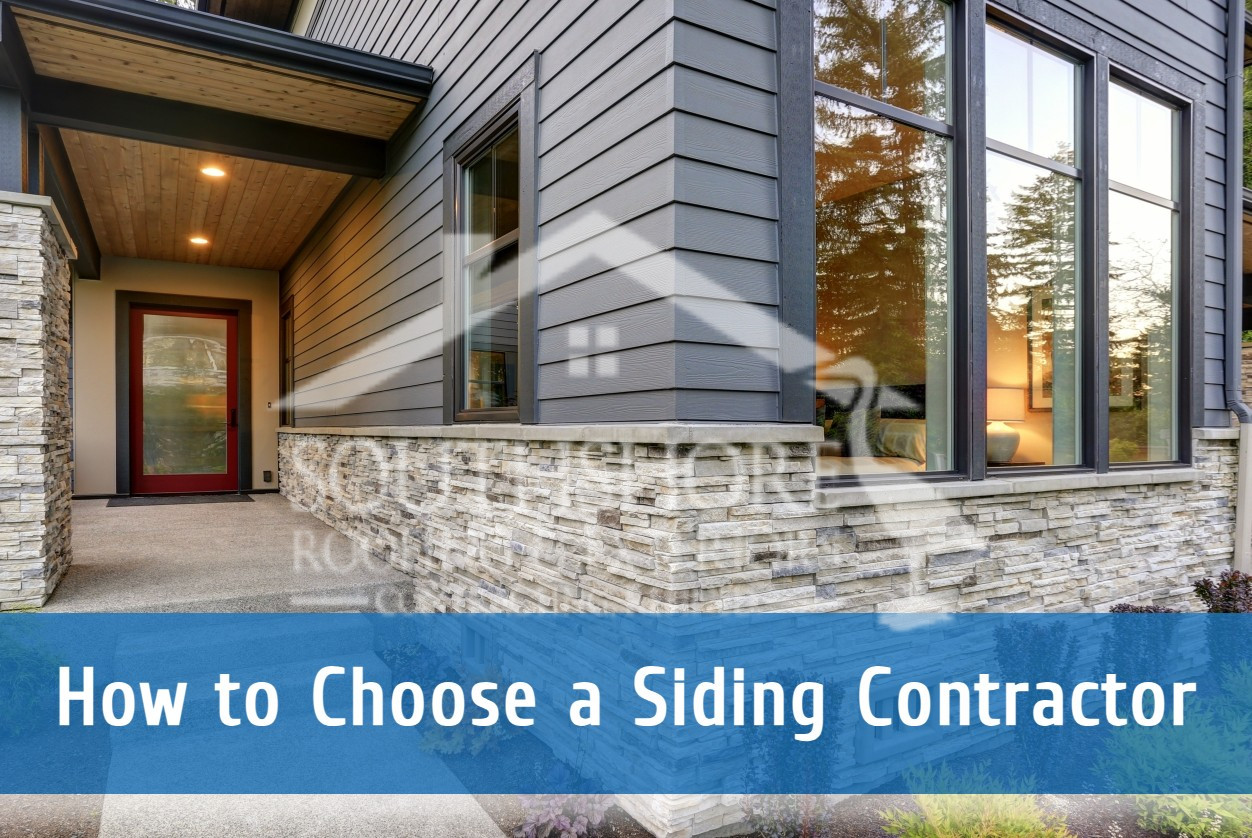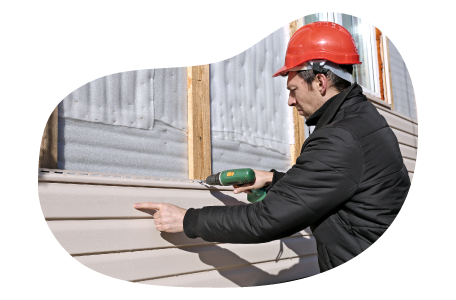The Vital Guide to the Numerous Kinds Of Home Siding and Their Unique Benefits
In the realm of home renovation, selecting the ideal home siding is an essential decision that impacts both visual charm and useful efficiency. The selection of materials offered, such as timber, plastic, fiber block, cement, and steel, each deal distinct benefits that deal with various demands and preferences. Understanding these differences can considerably improve the durability and worth of a residential property - morris siding contractor. With so several choices to think about, which exterior siding material really stands out for your details job? Discovering these choices can result in informed decisions that align with both design and usefulness.
Wood House Siding
Wood exterior siding, a popular selection for household outsides, offers a timeless aesthetic that integrates natural elegance with architectural honesty. This house siding material is offered in numerous styles, consisting of clapboard, shingles, and board-and-batten, permitting property owners to tailor their façade to match their layout choices. Wood exterior siding is usually crafted from long lasting types such as cedar, redwood, or ache, which are understood for their resilience and ability to hold up against environmental stressors.
Among the primary advantages of timber house siding is its exceptional insulation residential properties, which can add to power performance and reduced home heating prices. In addition, wood home siding is eco-friendly, making it an environmentally pleasant option when sourced sustainably. Normal upkeep, consisting of painting or discoloration, can extend its life expectancy and improve its look, permitting homeowners to preserve the natural appeal of the wood.
However, prospective downsides consist of sensitivity to parasites, rot, and climate damage, requiring sufficient treatment and maintenance - morris siding contractor. Regardless of these issues, when correctly cared for, timber exterior siding can offer a resilient and attractive service that enhances the character of a home while providing a cozy, inviting ambience

Plastic House Siding
Vinyl exterior siding has actually become a leading selection for home owners seeking a low-maintenance outside alternative that combines resilience and cost. This flexible material is crafted from polyvinyl chloride (PVC), making it immune to different weather, including wetness and UV rays. As a result, plastic siding does not warp, rot, or discolor, making sure long-lasting aesthetic charm.
One of the primary advantages of plastic home siding is its considerable series of shades and styles, allowing property owners to achieve the desired look for their residential or commercial property without the need for constant repainting. Furthermore, vinyl exterior siding is very easy to set up, which can dramatically lower labor costs during building and construction or restoration jobs.
Plastic exterior siding also contributes to power efficiency. Lots of options function insulation support, which enhances thermal performance, aiding to keep comfortable interior temperatures and potentially decreasing power bills. Its smooth surface area helps with very easy cleansing, requiring just regular washing with a yard hose to remove dirt and particles.
Fiber Cement House Siding
Fiber concrete house siding has gained grip among contractors and homeowners alike as a result of its exceptional combination of toughness and visual adaptability. Composed of a mixture of cellulose, concrete, and sand fibers, this siding choice is crafted to withstand extreme weather, consisting of high winds, heavy rain, and temperature variations, making it a lasting selection for property exteriors.

One of the key benefits of fiber concrete exterior siding is its resistance to parasites, such as termites, and its non-combustible nature, offering boosted fire security. morris siding contractor. In addition, it is offered in a vast array of structures, styles, and colors, enabling home owners to attain their desired visual without compromising efficiency
An additional benefit is its reduced maintenance demands; fiber concrete house siding typically requires painting or discoloration every 5-10 years, which is much less frequent than other materials. Its durability adds to a reduced general cost of possession, as it minimizes the click for source demand for regular repair work or replacements.
Inevitably, fiber cement exterior siding represents an excellent financial investment for those seeking a durable, eye-catching, and versatile outside option, incorporating both type and feature to enhance the home's aesthetic appeal.
Steel Exterior Siding
The anchor appeal of metal siding hinges on its durable toughness and modern visual charm, making it a preferred selection for contemporary architecture. Offered in materials such as aluminum and steel, steel exterior siding uses a variety of coatings and colors, enabling house owners to accomplish a customized appearance that matches their design vision.

Energy performance is another substantial benefit, as many steel house siding items are created with insulation options that help manage indoor temperatures. This can lead to lowered energy prices gradually. In addition, metal house siding is usually recyclable, making it an environmentally pleasant selection for sustainability-minded home owners.
The setup process for steel house siding can be reasonably simple, causing a quicker turnaround time for building and construction jobs. Overall, steel home siding incorporates performance and design, making it a functional option for those seeking a aesthetically enticing and enduring exterior coating.
Brick and Rock Siding
Brick and stone home siding stands apart as a timeless choice that boosts the visual appeal of any kind of home. Recognized for their durability and reduced upkeep, these products offer an extraordinary roi while boosting the home's curb appeal. Available in numerous shades, textures, and patterns, brick and stone can be tailored to suit diverse building designs, from standard to contemporary.
One of the main advantages of brick and stone home siding is their power effectiveness. Both materials have natural protecting residential properties that assist control interior temperatures, potentially reducing home heating and cooling costs. In addition, they use superior fire resistance contrasted to other siding options, adding to boosted security.
One more advantage is their longevity. Block and stone can last for years, commonly calling for very little upkeep beyond occasional cleaning. Unlike timber exterior siding, they Recommended Reading are unsusceptible insects and rot, making certain a resilient exterior that endures the components.
Verdict
In recap, the choice of home siding considerably influences a home's aesthetic allure, energy effectiveness, and maintenance demands. Each type of home siding-- whether timber, plastic, fiber block, steel, or cement and rock-- provides unique advantages tailored to different property owner choices and ecological conditions.
One of the primary benefits of timber home siding is its exceptional insulation residential properties, which can contribute to energy effectiveness and lower home heating expenses. Additionally, wood home siding is biodegradable, making it an eco pleasant choice when sourced sustainably.One of the primary benefits of steel house siding is its resistance to various environmental factors.Energy performance is one more significant advantage, as lots of steel house siding items are made with insulation options that assist manage interior temperature levels. Each kind of house siding-- whether wood, vinyl, fiber block, concrete, or metal and rock-- provides distinct advantages tailored to various house owner preferences and environmental conditions.